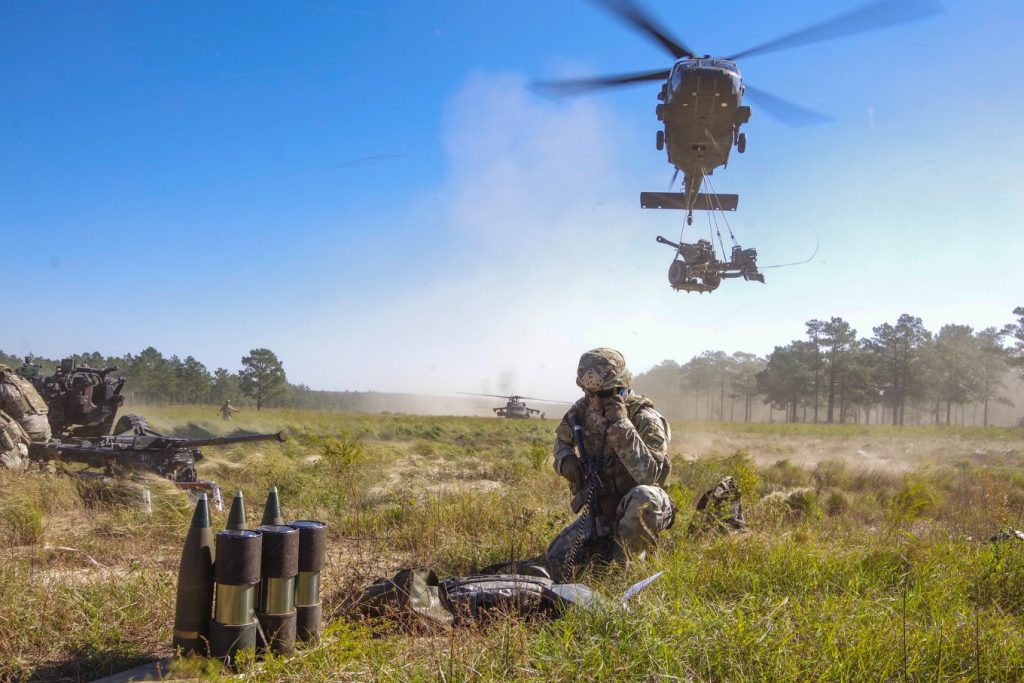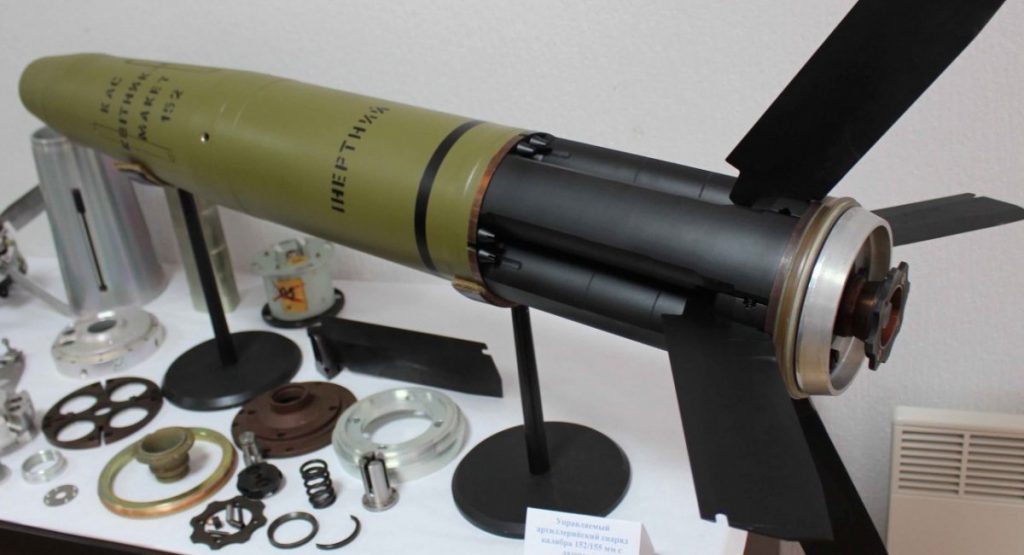Six new types of weapons to resist Russian aggression
The Russian Federation is betting on massive mechanized connections, ballistic missiles, artillery and hypersonic weapons. In this situation, the US Army should avoid dramatic failures of its defense programs, such as the Future Combat System, and focus on ready-made solutions.
This conclusion was reached by the analytical publication National Interest, which published an overview of the Pentagon’s defense programs, which can really help on the battlefield against the Russian army. In addition, they will come in handy against China, which is an equally dangerous adversary for the United States.

Aimed long-range fire
Despite the fact that the US Army in all conflicts relied on the full achievement of air superiority and could constantly provide air support to ground units, a future conflict with a more technologically advanced state may make such a strategy impossible.
A rich air defense system of the Russian Federation can cause a lot of trouble even for the US Army, which will spend resources and time to destroy numerous SAMs. Therefore, according to the Western publication, it is better not to “put all eggs in one basket”, but to start developing high-precision long-range artillery as soon as possible.
We are talking about a project to modernize the M109 Paladin self-propelled guns to the A7 level, which received a new howitzer with a barrel length of 58 calibers, instead of a 39-caliber one. That made it possible to fire at a distance of 70 km.
In combination with the high-precision Excalibur projectile, it allows effective fire far beyond the capabilities of the barrel artillery available in the Russian Federation, including the new Koalitsiya-SV self-propelled guns, which, although supplied to the Russian army in homeopathic doses, go to units that are located near Ukraine.
The action of the American M270 and HIMARS ground-based rocket systems, for which a new batch of high-precision GMLRS missiles with a range of up to 70 km, was recently ordered, should also be expanded.
In addition, these systems should be able to launch the Precision Strike missile from a flight range of up to 500 km, which will turn these former rocket salvo systems into full-fledged operational-tactical missile complexes.
On the part of Defense Express, we should note that Ukraine is also following these trends. In particular, “Vilha” and “Vilha-M” can ensure the range of hitting targets at a distance of up to 70 and 120 km, respectively.
There is some progress in the domestic OTKR “Sapsan” project, for which funds should be allocated this year and development should be completed in the near future.
At the same time, the creation of a high-precision artillery projectile, despite all the efforts under the “Kvitnyk”-“Pervynok” project, is still progressing a little slower than desired.
But for the sake of fairness, we should note that “Barvynok” has only one semi-active laser guidance channel, that is, it needs a gunner. And Excalibur is also equipped with GPS, which allows you to fire at stationary objects without illumination.

A combat vehicle of a new generation
The National Interest believes that the US Army should replace the aging M2 Bradley infantry fighting vehicle, rather than looking for ways to modernize them, which are constantly facing problems, for example, due to conventional batteries.
But the Optionally-Manned Fighting Vehicle project to create optionally controlled combat vehicles is still stalling despite as many as five attempts to “revive” the competition.
The situation is a little better with the creation of a light tank under the Mobile Protected Firepower program, in which projects from General Dynamics and BAE Systems are already competing at the finish line.
The program for installing active protection systems on armored vehicles is also positively evaluated. In particular, in January of this year, the contract for the supply of the Trophy active protection complex for M1 Abrams tanks was completed.
As for the situation in Ukraine, so far the replacement of frankly outdated BTR-60/70/80 continues, but at a far from striking pace only with BTR-4. In addition, this car has already reached its “ceiling” of modernization and, unfortunately, loses in many parameters to the capabilities of the new Russian “Boomerang”.
The situation can be corrected by ordering new-generation wheeled vehicles and deep modernization of BTR-60/70 with their transfer to the second line.
Against this background, the situation is even worse with BMP-1/2, which not only continue to remain in the troops, but are also supplied from European countries of the former Warsaw bloc. But the existing projects are modern
Army aviation
For the US Army, helicopters that perform logistical tasks, such as the UH-60 Black Hawk or H-47 Chinook, and strike missions – the AH-64 Apache – are of great importance. However, all these models were created decades ago and maintain their combat capabilities through constant modernization.
But it cannot last forever, so the Pentagon is conducting the Future Vertical Lift and Future Attack Reconnaissance Aircraft programs to create new machines. Among the possible variants of the military transport helicopter are the Bell V-280 Valor and the Sikorsky SB-1 Defiant. And impact: Sikorsky Raider X and Bell 360 Invictus.
At the same time, the situation with army aviation in Ukraine still looks more than pessimistic. There is no question of replacing the Mi-8 and Mi-24, and all the ways of their modernization are still focused on the situation around “Motor Sich”, the property of which was seized, and the SBU is conducting an investigation into subversive and subversive activities in favor of the Russian Federation.
Anti-aircraft and anti-missile defense
The development of enemy drones for the US military carries quite large risks on the battlefield. The answer to this could be Stryker A1 IM-SHORAD machines, which received an arsenal of weapons corresponding to the Apache attack helicopter, including Hellfire and Stinger missiles. And also the development of combat lasers, which are already installed on wheeled chassis, such as CLWS.
As for anti-missile defense, the US Army has already received the first sets of the Israeli Iron Dome system, which is rightly considered the most effective complex in its class. And it is also constantly modernizing its Patriot and THAAD, which will remain the basis of air and missile defense in the near future.
Returning to Ukraine, the issue of updating air defense systems is foreseen by the Vision of the Air Force until 2035, but the financial costs are similar to the estimate for new fighters.
Protection of soldiers
The National Interest cited a rather interesting statistic that, despite the fact that in the US Army infantrymen make up only 4% of the entire army, they account for 90% of casualties in all conflicts since 2001.
Despite all the high technology, infantry remains infantry
Despite all the high technology, infantry remains infantry
To protect soldiers in the US, they plan to increase training with the help of realistic simulators and keep professional and experienced sergeants and officers in the army thanks to financial incentives.
As well as the rearmament of the army on more effective shooting systems, in particular under the Next Generation Squad Weapons project, which provides for the rearmament on new automatic rifles and machine guns.
In addition, it is proposed to accelerate the integration of new technologies, such as the Individual Weapon Overmatch Optic sight, which can independently find targets and prevent the fighter from making mistakes.
In turn, the Armed Forces are also increasingly actively involved in new types of training, in particular the MILES and LaserTag systems. At the same time, there is no question of mass replacement of small arms, despite the already moral obsolescence of various AKs.
The sixth element of success in the confrontation with the Russian Federation for the US army, according to National Interest, should be the development of communication and automatic control systems of troops, in which the Pentagon has already sent billions of funds.
